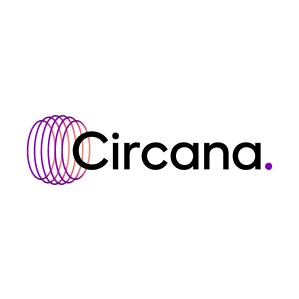- Circana
- 2 days ago
- 5 min read
Demand forecasting has significantly transformed over the past few years. Headwinds such as still-stubborn inflation, elevated interest rates, tight labor markets, and geopolitical uncertainties have altered the ways that retailers and manufacturers assess and respond to their respective demands, while shifting consumer behaviors and increasingly splintered retail channels challenge traditional approaches. At the same time, the growing reliance on technologies including machine learning (ML), automation, and predictive analysis is reshaping how businesses go to market and making some previous practices outdated.
Timing is one of the biggest changes. Traditional forecasting was based on historical data, using past sales trends to predict future demand.
Now, many retailers and brands seek to gauge trends in real time or almost-real time using advanced technologies. They can access data swiftly and also factor in external and often-unanticipated circumstances like extreme weather or viral TikTok trends.
Why Demand Forecasting Matters
Although methods are evolving, demand forecasting remains an important business discipline. Demand forecasting, at its heart, is the systematic process of projecting future consumer demand to inform short-term and sometimes immediate decisions as well as longer-term initiatives.
Both industry sectors rely on demand forecasting plans. Manufacturers need to understand consumer demands and their customers’ needs as they source raw material, run their lines, manage supply chain strategies, determine inventory, and make decisions for retail customers. Retailers, meanwhile, rely on forecasts to determine what’s happening across categories and markets.
From new product development to seasonal promotions to the need to cut waste and optimize workforces, forecasting is critical to both retail and CPG operations and, ultimately, their profitability. In turn, data is critical in demand forecasting. Clean and harmonized data enables retailers and CPGs to get it right more often, so they can retain their already-slim margins in a hyper-competitive environment.
The Evolution of Demand Forecasting Techniques
The ability to forecast demand with data-driven precision is foundational to operational efficiency, profitability, and customer satisfaction. To optimize data for better forecasts, it is important to learn more about the different methods of collecting and using information.
Traditional quantitative and qualitative methods
Retailers and brands have long used quantitative data to predict demand. Historical data helps identify seasonal or cyclical trends. This kind of quantitative data, which includes moving averages, regression analysis, and exponential smoothing, among other methods, has also proven useful in understanding how specific variables like promotions, economic conditions, and competitive pricing impact sales and volume.
Qualitative methods are often integrated with quantitative methods to get a better perspective for forecasting. These qualitative methods range from market research to panels of experts, also known as the Delphi Method.
Emerging methods are changing the game
Accelerations in technologies like ML have increased the accuracy of predictions, sometimes dramatically. In addition to analyzing vast datasets and integrating complex and multiple variables to streamline processes and identify problem areas, such tools can detect even subtle shifts in consumer behavior that might not have otherwise been discovered.
The most significant outcome of these enhanced capabilities is the ability to make near-real-time adjustments. Retailers and brands, at crucial times in their business, can consult dynamic forecast updates and respond immediately, whether an issue is related to supply chain volatility, geopolitical event, or other situation. These teams can also benefit from automated alerts for inventory issues or spikes in demand.
Human judgment remains relevant
It’s important to note that although high-tech tools are valuable and affect forecasting practices, human intervention remains crucial. Humans across many levels of a company play an important part in fine-tuning models, especially in cases of rapid growth or decline.
How to Improve Forecast Accuracy and Speed for Greater Profitability
Retailers and manufacturers are expanding their demand forecasting approaches at a pivotal time, as companies of all sizes and types face simultaneous pressures to stay competitive, optimize operations, and meet consumer expectations. Using improved methods, while also leveraging historical data that sheds insights into reliable seasonal and cyclical trends, helps retailers and CPGs navigate challenges and maximize profits.
There are several ways to optimize demand forecasting across all methods to ensure that the right products reach the right consumer at the right time and place.
Get a complete perspective with both holistic and granular data
Broad data sets are useful because they provide a comprehensive assessment. Historical trends and competitive benchmarks provide a bird’s-eye view of the operating environment and the larger competitive landscape.
Meanwhile, granular data can be a differentiator in demand forecasts. Larger retailers and brands, in particular, can utilize granular data effectively to spot trends or problems and take quick action. Smaller companies may not have the same kind of flexibility or resources for investment, but rapidly accelerating technologies are making granular data more accessible and affordable, making improved forecasting available to suppliers of all sizes.
Benefit from customization
The availability of actionable insights in a real-time environment has led to the development of more tailored forecasts. Custom models and data assets are used to create forecasts that are both understandable and actionable, because they relate directly to what is going on with a particular location or product line.
Take an omnichannel approach
Consumers are shopping more channels, often simultaneously. Their habits are not siloed, and demand forecasts shouldn’t be siloed, either. Given today’s omnichannel marketplace, forecasts must account for both online and in-store needs and trends.
Creating a unified view of consumer demand requires technology platforms that can aggregate and analyze omnichannel data for a better understanding of the complete customer experience. Inventory management needs may vary by channel but should look and feel unified to consumers.
Collaborate for improved forecasts
Collaborative forecasting improves the effectiveness of demand forecasting. Retailers, manufacturers, and third-party data providers like Circana can work together to create more accurate plans and build stronger relationships.
There are several benefits to joint efforts. For example, each party has unique signals that reduce variance in forecasts. Retailers can share POS and loyalty data, while manufacturers can provide information on innovation pipelines and trade plans. Circana delivers a holistic context with macro, market, and category data. Taken together, those shared views align inventory, improve on-shelf availability, and enhance resilience with joint scenario planning around potential disruptions related to supply shocks, weather events, tariffs or other situations.
Such collaborations can also help rein in costs. Improved forecasts reduce costly over- or under-stocking and result in more efficient ordering.
Collaborative forecasting works especially well for seasonal merchandising and promotional events, when accurate inventories and execution are pivotal. For example, real-time information ensures that a store stocks enough of a popular brand of jarred gravy ahead of the Thanksgiving holiday in the U.S. In addition to real-time and near-real-time monitoring, collaboration can assist in post-event analysis, through structured shared readouts.
Why third-party data adds value
A third-party partner like Circana strengthens collaboration. Neutral forecasts avoid inherent internal biases and are valuable in building trust at the leadership level.
Circana also offers data harmonization at scale, to unify hierarchies that may differ by retailer or by channel. Granular and broad data sets from a single source of truth add context for true market signals that lead to more informed decisions.
Update Demand Forecasting Capabilities with Circana
The goal of modern demand forecasting is not simply to predict the future but to understand the drivers behind it. By leveraging holistic data and engaging in scenario planning, organizations can transition from a reactive approach to a proactive, data-informed strategy. Circana’s Forecasting solutions are based on complete data to give retailers and manufacturers the ability to create and deploy effective strategies. Our Liquid Supply Chain™ solutions allow you to ensure your strategic plans are being executed and give near real-time visibility to when and where changes should be made to ensure success.




























